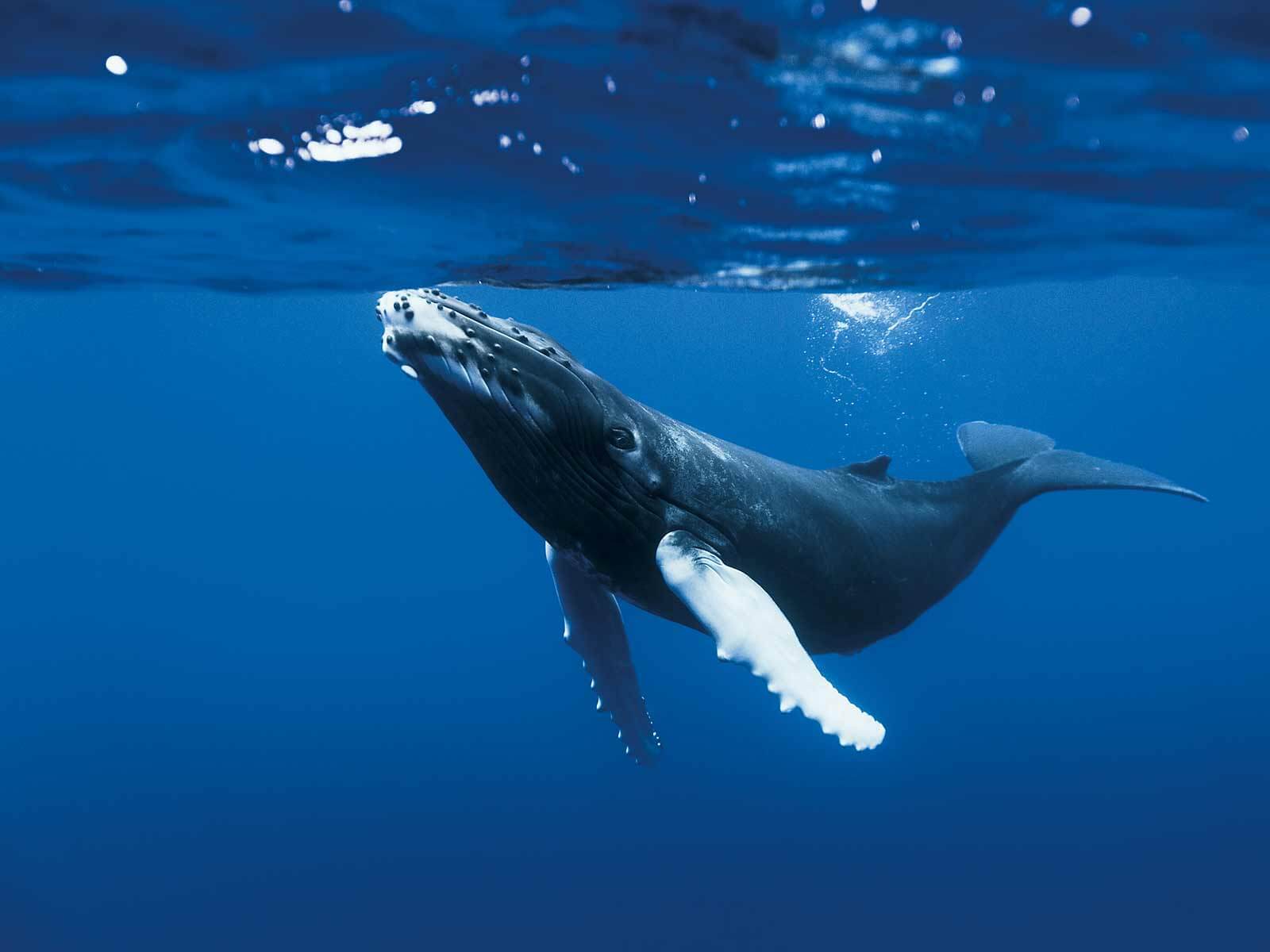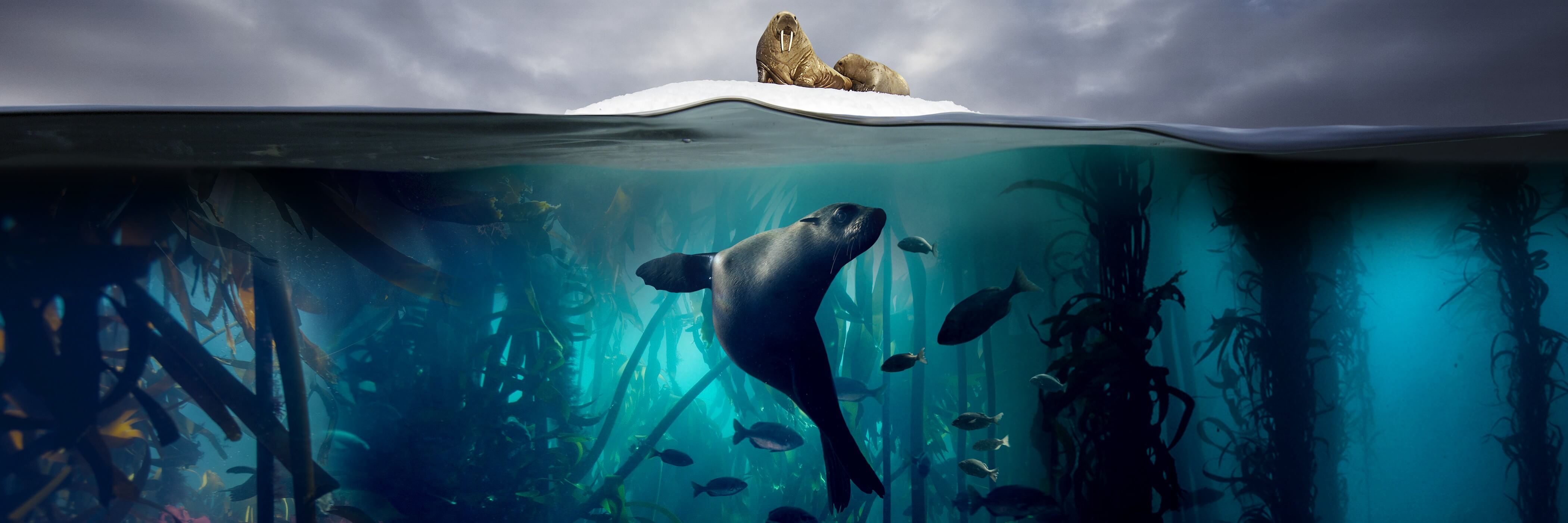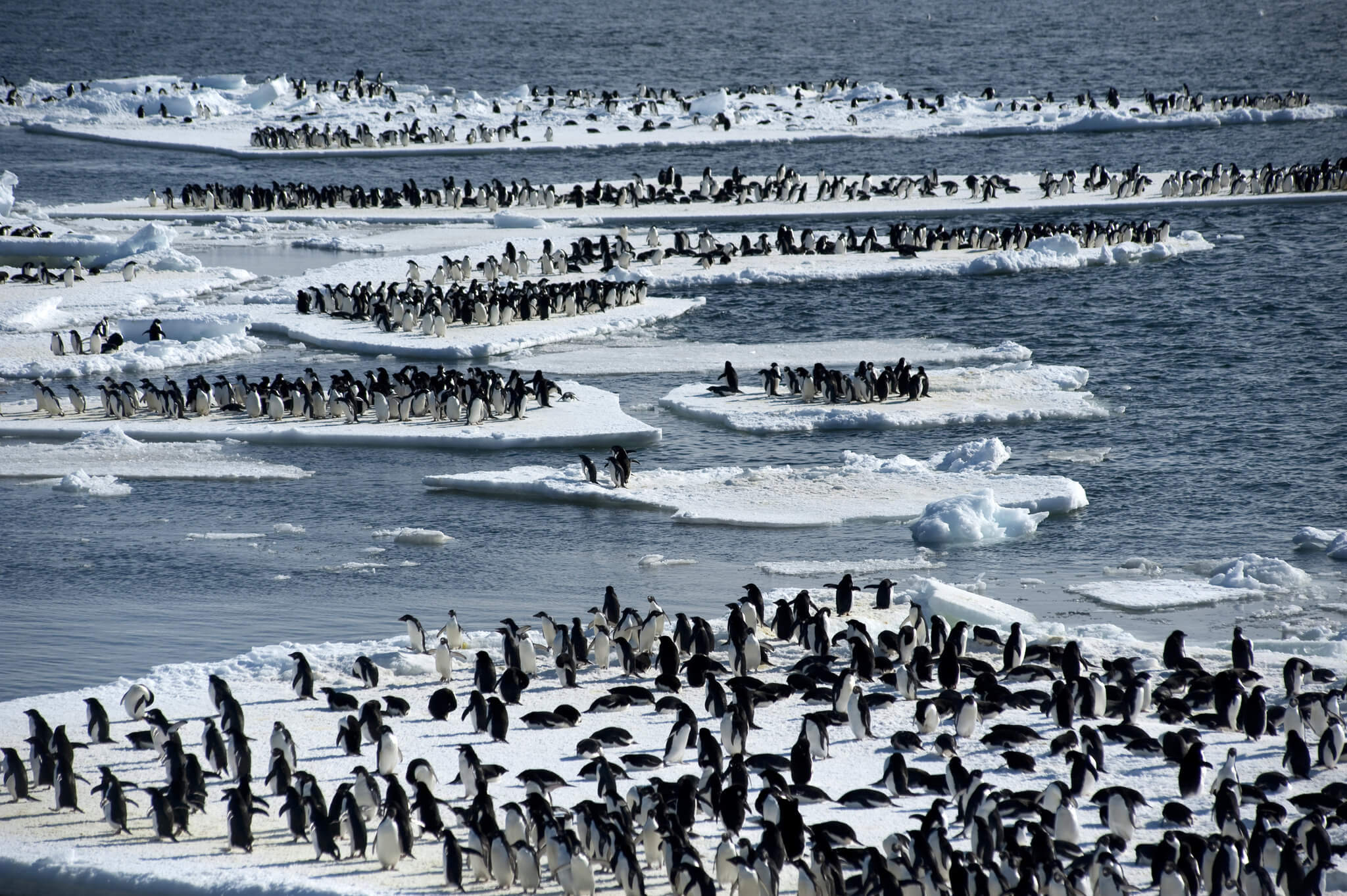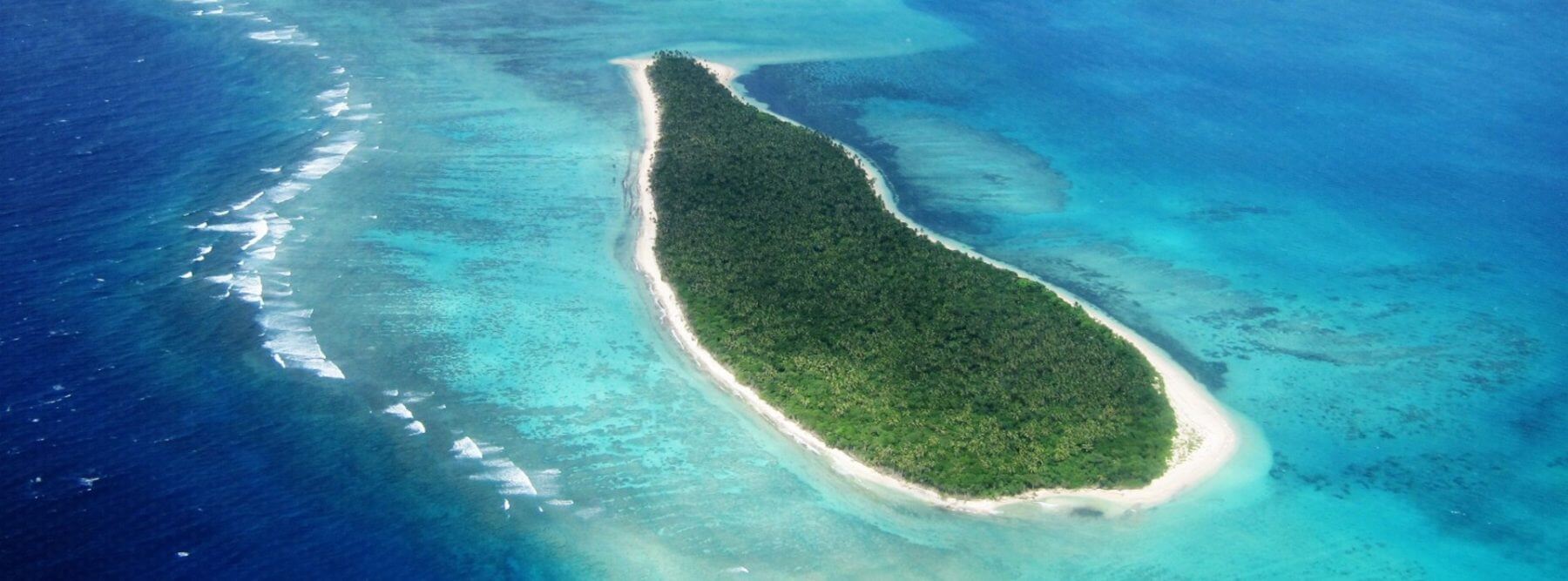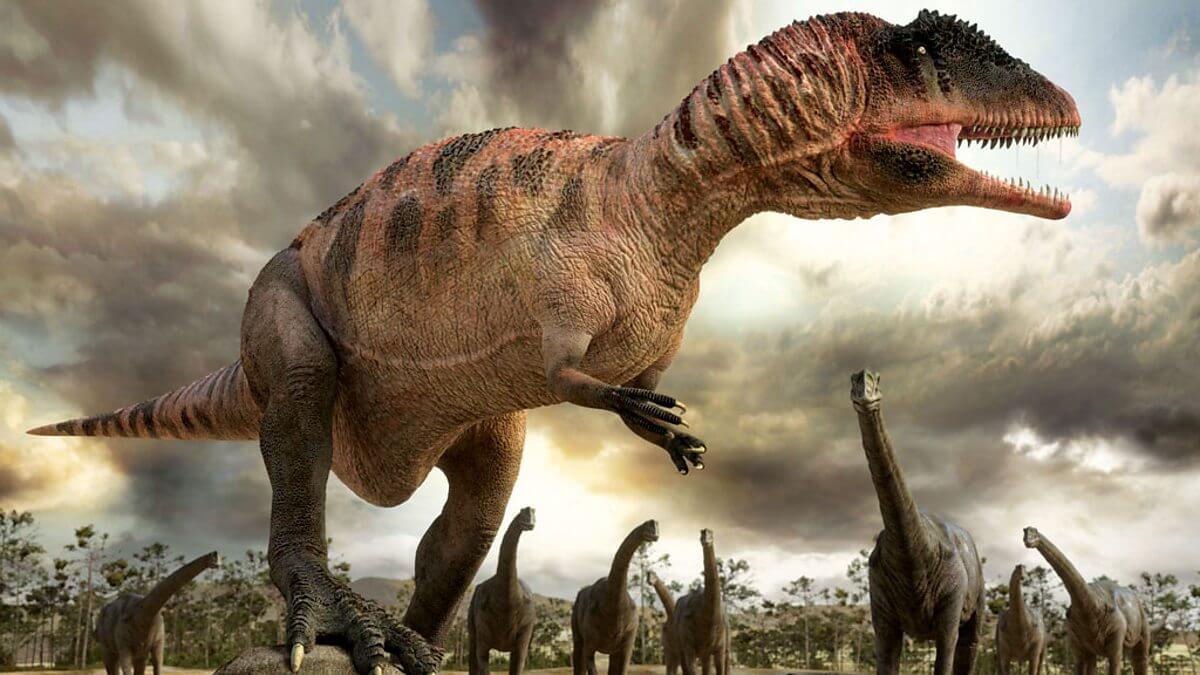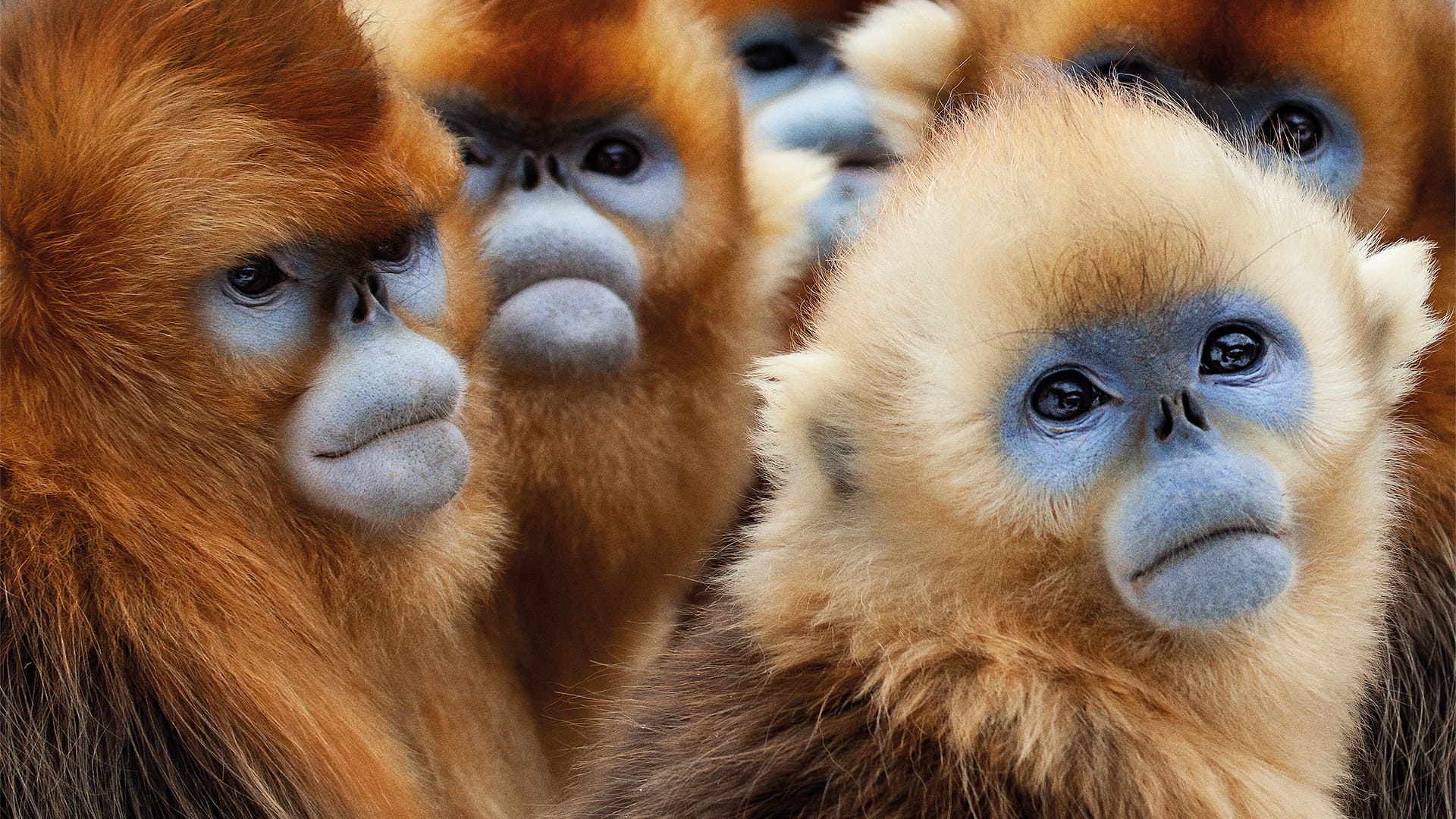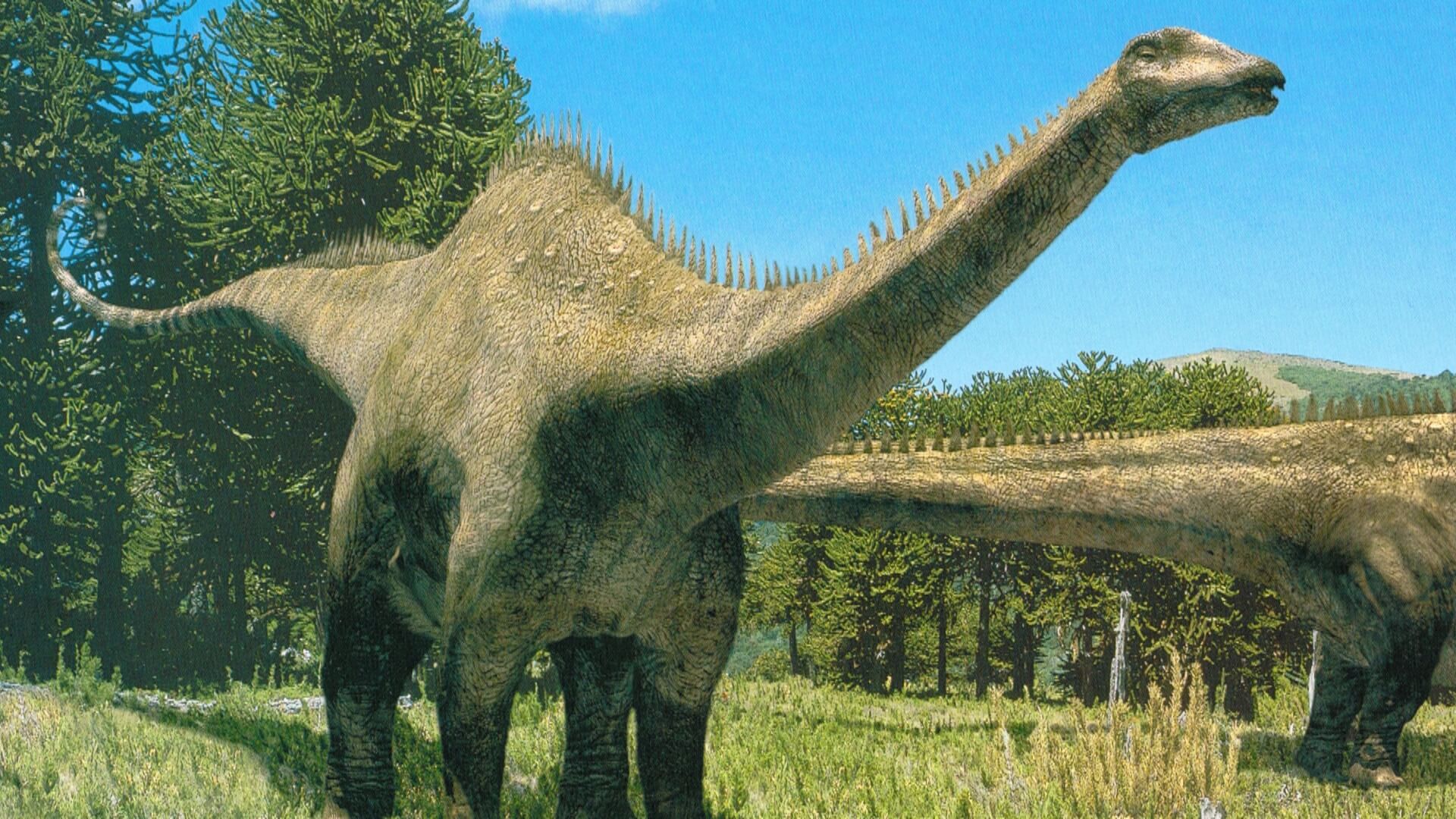description:
The Blue Planet is a BBC nature documentary series narrated by David Attenborough, first transmitted in the United Kingdom from 12 September 2001. Described as “the first ever comprehensive series on the natural history of the world’s oceans”, each of the eight 50-minute episodes examines a different aspect of marine life. The underwater photography included creatures and behaviour that had previously never been filmed.
episodes:
01. The Blue Planet
Broadcast 12 September 2001, the first episode looks at how ocean life is regulated around the globe by currents and the varying position of the sun. Near a Pacific seamount, there is a large concentration of marine animals because when the current makes contact with the submerged rock, it forces upwardsplankton and other organisms. This in turn attracts other fish to the area that are higher up the food chain, like tuna, and those that are higher still, such as silky sharks. Off South Africa, a similar situation occurs every June when sardines migrate and are pursued by a caravan of various predators. The South Atlantic waters are the roughest, and storms also churn up nutrients to the surface. These feeding grounds have led to the world’s largest albatross breeding colony, on Steeple Jason Island, west of theFalklands. Phytoplankton forms the basis of all sea life, and every night some 1,000 million tonnes of creatures ascend from the deep to search for food. Lunar phases can also have a bearing on events and the mass arrival of Ridley sea turtles on a Costa Rican beach is shown. Herring initiate the most productive food chain, providing sustenance for humpback whales, and Steller’s and California sea lions. In addition, their eggs are nutrition for many, both above and in the sea. Along the coast of California, a migrating gray whale and her calf are targeted by a pod of orcas, who hunt down and kill the calf. Meanwhile another gray whale carcass has sunk to the bottom of the deep sea. Hagfish, a sleeper shark, and other scavengers arrive to feast on the carcass. A year and a half later the carcass is striped to the bone. This episode won an Emmy Award for “Outstanding Cinematography for Non-Fiction Programming”. George Fenton’s work in this episode won another Emmy for “Outstanding Music Composition for a Series (Dramatic Underscore)”. This episode was broadcast in the United States with the title “Ocean World”.
02. The Deep
Broadcast 19 September 2001, the next programme explores the unknown depths of the ocean. Over 60% of the sea is more than a mile deep and it forms the planet’s most mysterious habitat. A sperm whale descends 1,000 metres to look for food and is followed. On the way down, a number of unusual creatures are witnessed, such as transparent squid and jellies, whose photophores give pulsating displays of colour. In such dark places, both being able to see (or sense movement) and the means of quick concealment are equally desirable. To that end, some use bioluminescence as a means of detecting food or evading predators. A descent to the very bottom of the ocean — some 4,000 metres — reveals life even at such cold temperatures, much of it new to science. It is dominated byechinoderms that sweep the sea bed; however, there are occasional large hunters, such as chimaera. In addition, sixgill sharks can grow up to eight metres in length and have remained unchanged for 150 million years. They are described as “living fossils” and relatively little is known about them. As the continental slope flattens out it joins the abyssal plain, which can form huge trenches. At seven miles, the deepest is the Mariana trench, and fish have been found there right down to the very bottom. Attenborough remarks that more is known about the surface of the moon. Species captured on film for the first time include the Dumbo octopus and the hairy anglerfish. This episode was nominated for two Emmy Award for Outstanding Sound Editing and Outstanding Sound Mixing in the non-fiction category. It was also nominated for a BAFTA TV award for Best Innovation.
03. Open Ocean
Broadcast 26 September 2001, the third installment focuses on life in the “marine deserts”: seas that are furthest from land. Such waters contain the swiftest and most powerful of ocean hunters. A feeding frenzy is shown, as striped marlin, tuna and a Sei whale pick off a shoal of sardines until all within it have been consumed. Manta rays also gather to eat the eggs of spawning surgeonfish. Accumulations of plankton correspond to ocean ‘boundaries’ and consequently, schools of fish seek them out. This in turn attracts predators, and a sailfish is filmed on the attack. The only escape for smaller fish is to put as much distance between them and their pursuers as possible. Bluefin tuna are able to heat their bodies and so can hunt in colder conditions than the others of their species. Off the coast of New Zealand, an undersea volcano has formed an island and the nearby currents sweep many kinds of creatures to it, again creating huge feeding grounds. Another Pacific seamount is surrounded by hammerhead sharks, but not to seek food: they are there to allow other fish to clean them of parasites. However, others that are on the lookout for prey arrive in vast numbers. A large pod of common dolphins is too big to feed all at once and so splits up into smaller expeditions. One of these ends up near the Azores with a shoal of mackerel in its sights, but they have to compete for their quarry with an attendant flock of shearwaters and a group of adult yellowfin tuna.
04. Frozen Seas
Broadcast 4 October 2001, the next episode compares oceanic life in the Arctic and Antarctica. The winter in these regions brings temperatures of minus 50°C and frozen seas that create the biggest challenge. However, there are polynyas in the Arctic, which are free of ice owing to the pressure of currents on either side, and such places do provide refuge for some species, like the walrus and thebowhead whale. A pod of belugas is shown: their movements are limited to a single hole in the ice — therefore putting them at risk of attack from polar bears. Everything changes with the arrival of summer, when melting ice brings a variety of migratory visitors. At the other end of the planet, in the Antarctic, winter is even more harsh, but emperor penguins and Weddell seals stay throughout. Under the sea ice,krill shrink in size and revert to their juvenile form in order to save energy. Chinstrap penguins overwinter to the north, beyond the ice, but return during the spring to breed. Having managed to get ashore, they have to walk a great distance to find a nest site, and the most favoured is Zavodovski Island, an active volcano whose warmth keeps ice from forming. Further south, as the sea ice breaks up, humpback and minke whales appear, their target the abundant krill. The leopard seal is the Antarctic’s top predator. It is most effective underwater, and emperor penguins propel themselves at speed through its territory. Nonetheless, it almost invariably makes a kill.
05. Seasonal Seas
Broadcast 10 October 2001, this programme surveys the effects of the seasons on the world’s temperate seas — the most productive on Earth. Sable Island near Nova Scotia boasts the largest colony of grey seals, which breed there when the weather is at its worst. The pups remain marooned for weeks until the spring, when they are strong enough to swim. Spring also heralds the bloom of phytoplankton: it provides food for copepods, and they in turn are prey to jellyfish, which assemble in vast, million-strong swarms. On the Californian coast, giant kelp also flourishes and by summer, grows at the rate of a metre a day. It provides a sanctuary for shoals of fish and sea otters, the latter anchoring themselves to the seaweed when resting and keeping its grazers in check by eating them. Late summer in Alaska sees Pacific salmon heading inshore to breed. However, the level of their favoured river is too low and they are forced to wait in the open sea, where they fall prey to a salmon shark. The early autumn near Vancouver Island, and the temperature drops slowly. There, the last of the year’s baby herring become the focus for a feeding frenzy by diving auks and murres, and marauding rockfish. Pacific white-sided dolphins also inhabit these waters and, when not hunting nocturnally, socialise during the day. As winter arrives in the north, adult herring seek shelter but are hunted by orca, which club the fish with their tails to subdue them by creating waves of pressure.
06. Coral Seas
Broadcast 17 October 2001, the next instalment is about coral reefs, which are so crowded that they play host to a perpetual battle for space, even among the coral itself. It starts life as a larva that becomes a polyp. Having multiplied, it hardens into a limestone skeleton and grows to form a reef. As the community flourishes, animals develop relationships with one another and such a place can feature a huge variety of ocean life. Although corals feed nocturnally on plankton, sunlight] is vital because even though they are animals, each contains millions of single-celled algae. This in turn is the favoured sustenance of the humphead parrotfish, whose jaws are so powerful that it erodes much of the reef into fine sand. Algae also grows on the top of the reef and a battle for grazing rights between shoals ofpowder blue and convict tangs is shown, the former being initially overwhelmed by the latter’s weight of numbers before regaining the upper hand. The night-time hunting of a marbled ray alerts other predators and a group of whitetip reef sharks moves in, from which few are safe. Several breeding strategies are examined, including the acrobatic habits of brown surgeonfish and the colourful courtship of the flamboyant cuttlefish. Humpback whales are visitors to the reef and males establish their seniority by the loudness and strength of their song. Being fixed to the seabed, corals must synchronise their reproduction with lunar phases and the rising spring temperatures.
07. Tidal Seas
Broadcast 24 October 2001, the penultimate episode deals with marine life that is structured around the rising and falling tides. These are caused by the gravitational pull of the orbiting moon, but in some locations, this can also combine with the power of the sun to create a tidal bore. The world’s largest tides are to be found in the Bay of Fundy in Nova Scotia and therefore it is a rich feeding ground. A school offinback whales is closely shadowed by a flock of Cory’s shearwaters. However, they only have a limited time to feed before low tide, when they must retreat and other creatures appear. Elsewhere, some of the latter include sand bubbler crabs, bears (which feed on shellfish) and a snail species that can ‘surf’. The extreme spring tides allow opportunists to forage further, and raccoons are shown tackling a red rock crab. Some larger fish that hunt on the seabed, such as nurse sharks and stingrays, are forced to sit and wait until there is sufficient water in which to swim. A giant horse conch is shown devouring a tulip snail, and hermit crabs battle over its vacant shell. The varying water levels are no obstacle to tarpon: they can breathe air. This enables them to inhabit stagnant areas and hunt in them. The autumn equinox combines with a hurricane off the Bahamas to create a much higher tide than is usual, flooding large parts of the coast. When the sea recedes, it leaves behindsalt: food for brine shrimps and the perfect habitat in which flamingos can breed.
08. Coasts
Broadcast 31 October 2001, the final programme examines the world’s coastal environments, “the most dynamic of all ocean habitats”. The perils of living in such places are highlighted by Marine Iguanas on the Galápagos Islands, whose diet of seaweed is quickly grabbed between crashing breakers. Many shores provide sites in which to breed or lay eggs. Apart from birds, turtles are among other major species to do so, and the mass emergence of flatbacks on Crab Island in Australia is reduced by predatory herons, pelicans and other hunters. Each year, four million seabirds, comprising fourteen species, return to the island of Talan in eastern Russia to nest. By ensuring that all their chicks eventually leave at the same time, they lessen the impact of predators. The rough seas of the Southern Ocean play host to penguins, and a group of them is shown being pursued by an aggressive bull sea lion. The planet’s coldest seas are in Antarctica, and on South Georgia each spring, thousands of Southern elephant seals arrive to breed. A pair of males is shown fighting a bloody battle to control a harem of females. In Patagonia, the social nature of sea lions is shown as they establish colonies, each of them several hundred strong. While in some respects it is an ideal location for the growing young, high tide brings danger for the colony as a pod of orcas habitually goes on the attack. Having snatched a victim, the predator returns to the open ocean to ‘play’ with it.

